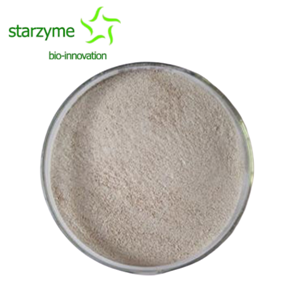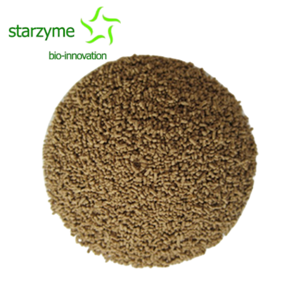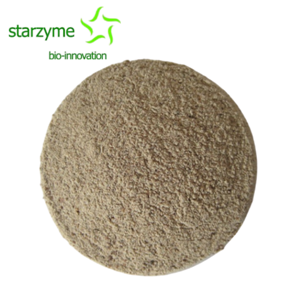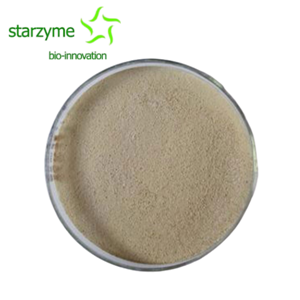Pruebas de Bacillus Subtilis en preparaciones microbianas para piensos
Tabla 1. Características distintivas de Bacillus Subtilis y bacterias similares a Bacillus ArticuloB. Subtilis
B. Licheniformis
B. cerebroB. coagulantes
B Sólido
B lento
B. Megaterio
B. pumilusCrecimiento anaeróbico-
+
+
+
-
-
-
- vicepresidente
+
+
+ +
-
-
-
+
Reducción de Nitrato +
+
+d
dd
d-
Hidrólisis de almidón+
+ +
+ +
+ +
-Licuefacción de gelatina
++
+
- +
d+
+Usar
propionato-
+DAKOTA DEL NORTE
--
-DAKOTA DEL NORTE
-
Citrato
+
+
+
d
-
-+
+
Ácido
Producción
D-xilosa
++
-
d-
+
d +
L-arabinosa
+ +
-
d
-
+d
+D-manitol
++
-Si después de la primera dilución (10
-3
), el número confirmado de colonias de Bacillus Subtilis es de 168 y 215 respectivamente, y tras la segunda dilución (10
| ), el número confirmado de colonias de Bacillus Subtilis es de 34 y 35 respectivamente, entonces: | N = (168 + 215 + 34 + 35) / [0,1 x (2 + 0,1 · 2) x 10 | -3 | ] | N = 472 / 0,00022 | N = 2145450 ~ 2100000 | De acuerdo con las reglas de redondeo numérico en GB/T 8170, el número estimado de Bacillus Subtilis de la muestra en este ejemplo en unidades de g o ml, es 2100000 CFU/g (o ml), o 2,1 x 10 | UFC/g (o ml). | |
Ejemplo 2: |
|
|
|
|
|
|
|
| |
|
|
|
|
|
|
|
|
| |
Nitrate Reduction |
|
|
|
|
|
|
|
| |
Starch Hydrolysis |
|
|
|
|
|
|
|
| |
Gelatin Liquefaction |
|
|
|
|
|
|
|
| |
|
|
|
|
|
|
|
|
|
|
|
|
|
|
|
|
|
|
| |
Acid Production |
|
|
|
|
|
|
|
|
|
|
|
|
|
|
|
|
|
| |
|
|
|
|
|
|
|
|
| |
7% Sodium Chloride Growth |
|
|
|
|
|
|
|
| |
pH 5.7 Growth |
|
|
|
|
|
|
|
| |
Note: + = positive; - = negative; d = Some strains are positive; ND = Undetermined | |||||||||
8. Calculation of Results and Report
8.1. Calculating the Number of Bacillus Subtilis Colonies on each dish.
Calculate the number of Bacillus Subtilis colonies (a) on each dish using Formula 1:
Formula 1
a = (b ÷ A) x C
Legend:
a: Number of Bacillus Subtilis colonies on each dish;
b: Number of colonies confirmed as Bacillus Subtilis colonies after sample selection;
A: Number of colonies selected for confirmation (5);
C: Number of colonies on the dish that embodies the distinguishing features of Bacillus Subtilis.
The final result (a) should be rounded to the nearest whole number according to the numerical rounding rules in GB/T 8170.
For Example:
If there is a total of 78 colonies on the dish that feature characteristics of Bacillus Subtilis, 5 are selected for the confirmation testing, and 4 of which are confirmed to be Bacillus Subtilis colonies, then:
a = (4 / 5) x 78 = 62.4
a = 62.4 ~ 62
According to the numerical rounding rules in GB/T 8170, the number of Bacillus Subtilis colonies (a) on this dish is 62.
8.2. Number of Bacillus Subtilis Colonies in Sample: Calculation Method & Report
Choose 2 serial dilution dishes (each dilution should have at least one dish, with a confirmed number of Bacillus Subtilis between 30 – 300 on the dish.), calculate using Formula 2, which is 1 ml or 1 g of Bacillus Subtilis in the sample, N.
Formula 2
N = Ʃa / V · (n1 + 0.1n2) · d
Legend:
N: The total number of Bacillus Subtilis in the sample;
Ʃa: The total sum of confirmed Bacillus Subtilis on all dishes;
V: Inoculation volume of the dish, ml;
n1: Number of dishes for the first dilution;
n2: Number of dishes for the second dilution;
d: The dilution factor of the first dilution (the value of d for undiluted samples is 1).
The final result (N) should be rounded to the nearest 2 significant digits according to the numerical rounding rules in GB/T 8170. The number of Bacillus Subtilis colonies in the sample can also be recorded using Scientific Notation (1.0 – 9.9 times 10x).
Report the estimated number of Bacillus Subtilis per ml or g of the sample, CFU/g or CFU/ml.
Example 1:
If after the first dilution (10-3), the confirmed number of Bacillus Subtilis colonies are 168 and 215 respectively, and after the second dilution (10-4), the confirmed number of Bacillus Subtilis colonies are 34 and 35 respectively, then:
N = (168 + 215 + 34 + 35) / [0.1 x (2 + 0.1 · 2) x 10-3]
N = 472 / 0.00022
N = 2145450 ~ 2100000
According to the numerical rounding rules in GB/T 8170, the estimated number of Bacillus Subtilis of the sample in this example in units of g or ml, is 2100000 CFU/g (or ml), or 2.1 x 106 CFU/g (or ml).
Example 2:
If the last dilution (10-4) confirms that the number of Bacillus Subtilis colonies are 120 and 130 respectively, then:
N = (120 + 130) / (0.1 x 2 x 10-4)
N = 250 / 0.00002
N = 12500000 ~ 12000000
According to the numerical rounding rules in GB/T 8170, the estimated number of Bacillus Subtilis of the sample in this example in units of g or ml, is 12000000 CFU/g (or ml), or 1.2 x 107 CFU/g (or ml).




